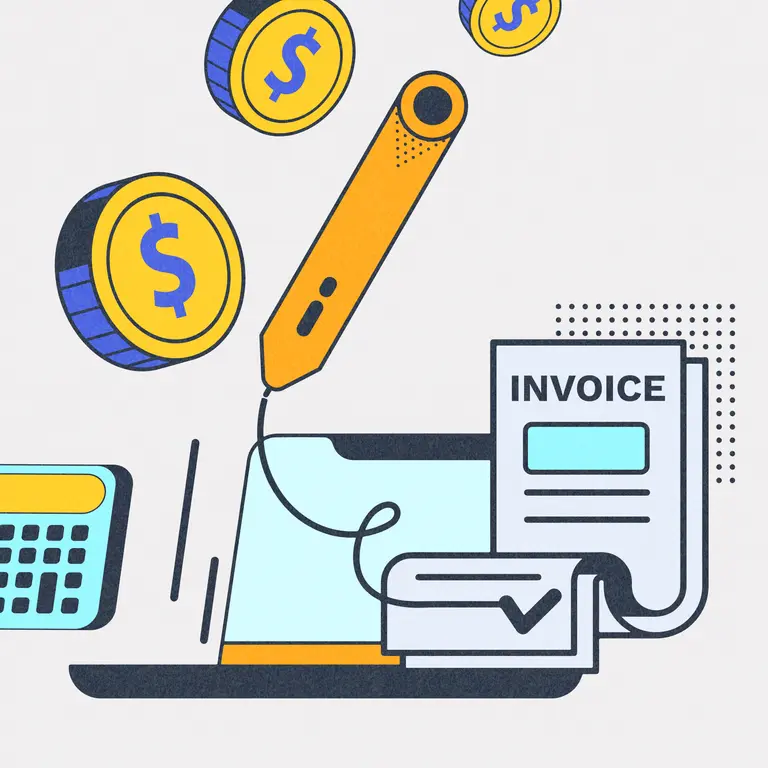Scaling Peer-to-Peer Lending Platforms with Automated Loan Processing
Peer-to-peer (P2P) lending platforms have revolutionized the financial landscape by connecting individual borrowers with lenders directly, bypassing traditional financial institutions. However, as these platforms grow, so do their operational complexities and risk management challenges. Scaling such platforms efficiently requires innovative solutions, and automated loan processing emerges as a game-changer in this context.
This article explores how automated loan processing enables P2P lending platforms to scale seamlessly. It delves into its impact on borrower evaluation, risk management, and operational efficiency. Additionally, we examine the role of tools to analyze the financial statements in strengthening decision-making processes within the automated framework.
The Need for Automation in P2P Lending Platforms
As P2P platforms grow, they face several challenges:
- High Volume of Loan Applications: Manual loan processing becomes inefficient with increasing loan applications.
- Risk Management: Evaluating the creditworthiness of borrowers at scale without compromising accuracy is critical.
- Regulatory Compliance: Platforms must ensure adherence to local and international financial regulations.
- User Experience: Borrowers and lenders expect fast, transparent, and seamless interactions.
Automated loan processing addresses these challenges by leveraging technologies such as artificial intelligence (AI), machine learning (ML), and natural language processing (NLP).
How Automated Loan Processing Works in P2P Lending
1. Automated Borrower Evaluation
Automated loan processing systems utilize AI algorithms to evaluate borrowers’ creditworthiness. These systems integrate with financial data sources to analyze:
- Income levels
- Employment history
- Spending patterns
- Credit scores
Using tools to analyze financial statements, these systems assess the borrower’s repayment capacity more comprehensively. For instance, a borrower with a steady income and manageable debt levels may be approved quickly, while those with financial inconsistencies may require further scrutiny.
2. Streamlined Document Verification
Manual document verification is time-consuming and prone to errors. Automated systems use optical character recognition (OCR) and AI to verify documents such as income proof, identity documents, and bank statements within minutes.
3. Dynamic Risk Assessment
Advanced automated platforms use predictive analytics to evaluate loan risks. They simulate various economic scenarios to gauge potential impacts on loan repayment. This dynamic approach allows P2P platforms to adjust interest rates or reject high-risk applications proactively.
4. Compliance Monitoring
Automated systems ensure that lending practices comply with local regulations by cross-referencing loan applications with updated legal requirements.
Benefits of Automated Loan Processing for Scaling P2P Platforms
1. Operational Efficiency
Automation significantly reduces the time required to process loan applications. Lenders and borrowers can complete transactions faster, enabling platforms to handle larger volumes effortlessly.
2. Enhanced Risk Management
By integrating tools to analyze financial statements, automated systems provide a deeper understanding of borrowers’ financial stability. This reduces defaults and improves lender confidence.
3. Cost Reduction
Automating repetitive tasks lowers operational costs. This allows platforms to invest resources in other areas, such as marketing and technology upgrades.
4. Improved User Experience
Borrowers benefit from quick approvals, while lenders gain access to curated investment opportunities with transparent risk assessments.
5. Scalability
Automation allows platforms to scale their operations geographically and demographically, reaching new markets without compromising service quality.
The Role of Financial Statement Analysis in Automated Loan Processing
Financial statement analysis is a cornerstone of effective loan processing. It involves evaluating key financial metrics, such as:
- Liquidity Ratios: Assessing short-term financial stability.
- Debt-to-Income Ratios: Understanding the borrower’s debt burden relative to their income.
- Cash Flow Analysis: Evaluating the consistency of income streams.
Incorporating tools to analyze financial statements into automated systems ensures:
- Accurate Credit Scoring: By analyzing trends in income and expenses, platforms can assign precise credit scores.
- Customized Loan Offers: Financial insights allow for tailored loan products that meet borrower needs.
- Real-Time Monitoring: Automated systems can flag borrowers whose financial statements indicate a higher likelihood of default.
Challenges in Scaling P2P Lending with Automation
1. Data Privacy and Security
Handling sensitive financial data requires robust cybersecurity measures to prevent breaches.
2. Algorithmic Bias
AI algorithms may unintentionally favor or disadvantage certain borrower profiles. Continuous monitoring and refining of algorithms are essential.
3. Integration with Legacy Systems
For established platforms, integrating automation with existing systems can be complex and resource-intensive.
4. Regulatory Hurdles
Navigating the diverse regulatory landscapes of different countries can slow down the adoption of automation.
Case Study: Scaling Success with Automation
Platform X, a leading P2P lending service, implemented automated loan processing to manage its growing user base. By integrating an advanced system that included tools to analyze financial statements, Platform X achieved the following:
- Reduced Loan Approval Time: Processing times dropped from 48 hours to just 6 hours.
- Lower Default Rates: Improved risk assessments reduced defaults by 15%.
- Geographical Expansion: Automation enabled the platform to enter three new markets within a year.
- Enhanced Customer Satisfaction: Borrower satisfaction scores increased by 25%, and lender retention improved significantly.
The Future of Automation in P2P Lending
1. AI-Powered Personalization
Future systems will offer borrowers customized loan products based on their financial behavior and needs.
2. Blockchain for Transparency
Blockchain technology can enhance transparency in transactions, building trust among borrowers and lenders.
3. Predictive Analytics
Advanced predictive models will allow platforms to anticipate market trends and borrower behaviors more accurately.
4. Integration with Open Banking
Open banking will enable seamless access to borrower financial data, further improving the efficiency of automated systems.
Conclusion
Loan processing automation is a vital enabler for scaling P2P lending platforms. By improving operational efficiency, reducing risks, and enhancing user experience, automation positions P2P platforms to handle growing demand effectively. The integration of tools to analyze financial statements further strengthens these systems by providing deeper insights into borrower profiles.
Also read: Fragrance Manufacturers in India for Long-lasting Scents
As technology continues to evolve, P2P lending platforms that embrace automation and leverage advanced analytics will lead the industry, delivering value to both borrowers and lenders while contributing to the broader financial ecosystem.







